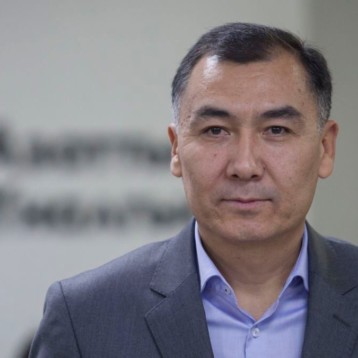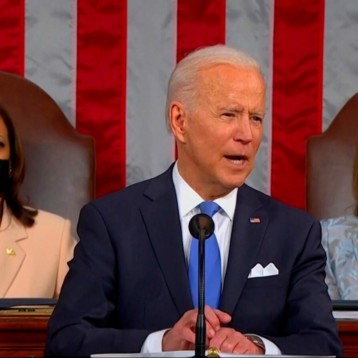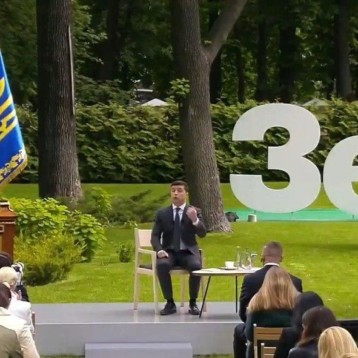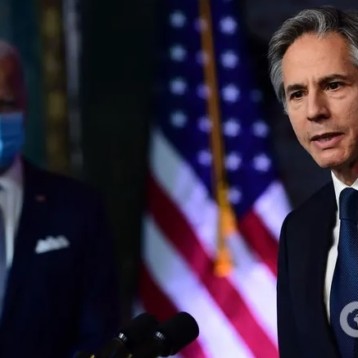The large questions that loom over Ukraine’s future as a nation cast shadows onto discussions about its complicated past. Growing up as Jewish in now war-torn Donetsk, Peter Zalmayev, a key organizer of the conference, board member of the New York City chapter of the American Jewish Committee, and director of the Eurasia Democracy Initiative, feels that Babi Yar remembrance is intimately related to Ukraine’s nationhood and European future.
Westand at the edge and watch a family play with a remote-controlled toy car by a playground that’s inside the ravine. A girl tosses a ball in the air as she walks past a monumental menorah and asks her grandmother, “What’s with the celebration?” as she takes note of the flowers and wreaths placed at its stone base.
In 1991, one month after Ukraine declared independence from the Soviet Union, that black menorah was erected in Kiev to guard the memories of victims who were killed in Babi Yar 50 years earlier.
From September 29 to September 30, 1941, the ravine in the north of Kiev became an abyss of death where the Nazis committed the single-largest massacre of Jews in the Holocaust. They shot and killed 33,771 for the simple crime of being Jewish.
Seventy-five years on, the menorah remains one of the only memorials in Kiev to explicitly acknowledge the particularity of Jewish victimhood in the Holocaust. In contrast, the official Soviet memorial from 1976 notes that the victims of the massacres were “citizens of Kiev.” The ravine, now in a public park, is much smaller than it once was. The Nazis filled in the ravine to cover the bodies, and later the Soviets landscaped the area as part of a wider attempt to erase the public memory of the horror that occurred there. Walking around the leafy park on the 75th anniversary of the slaughter, it’s impossible to comprehend the scale of such an event.
The Nazis would ultimately kill more than 100,000 people at the site by war’s end, a toll that includes Roma and Catholics, among others. Two-thirds were Jews. Our tour guide, Alexandra, notes that plans to build a bridge over the ravine — so that visitors could visit the site of the mass shooting without standing on an earthen tomb — were scrapped.
Although more than 30 monuments now mark the site, they are scattered about the park as distractions rather than a focus for the act of remembrance. The scene continues to evoke the words of Yevgeny Yevtushenko, whose 1961 poem, “Babi Yar” addressed the injustice of institutionalized forgetting: “No monument stands over Babi Yar; a steep cliff only, like the rudest tombstone.”
The poem was controversial for defying the Soviet silence about the massacres. The challenge of commemorating the painful history of Babi Yar is one that the organizers of this year’s 75th-anniversary gathering finally hope to meet. A Canadian organization, the Ukrainian Jewish Encounter, in cooperation with the government of Ukraine, the World Jewish Congress and a host of other partners, is holding what is the largest commemoration of Babi Yar ever to take place in the city where it happened.
The events are broad in topic and scope. They feature, among other things, a youth conference and a public symposium with lectures and panels on Soviet and Russian propaganda, Jewish-Ukrainian relations and Babi Yar as a symbol of the Holocaust. Various cultural events, including film screenings, theatrical performances and memorial concerts, are also on the program.
This is in contradistinction to Soviet times, when remembering the massacres was strictly forbidden; people were thrown in jail for merely placing flowers at the site. And this year’s commemoration occurs as Ukraine stands at a crossroads: Will it ape Russia in maintaining Soviet-era institutions and a culture of corruption, or will it move forward to join the European community?
The stresses of this decision have played out politically, socially and economically in recent years as a popular protest (the 2014 Maidan Revolution) led to Viktor Yanukovych’s ouster as president when he tried to back away from European Union trade deals. That in turn led Russian President Vladimir Putin to illegally annex the Crimean peninsula, and Ukraine remains embroiled in a military conflict in the Donbass region despite international efforts to halt the violence.
The large questions that loom over Ukraine’s future as a nation cast shadows onto discussions about its complicated past. Growing up as Jewish in now war-torn Donetsk, Peter Zalmayev, a key organizer of the conference, board member of the New York City chapter of the American Jewish Committee, and director of the Eurasia Democracy Initiative, feels that Babi Yar remembrance is intimately related to Ukraine’s nationhood and European future. Speaking about the emergence of a new civic national identity for Ukraine, he told us:
“This is a moment for Ukraine to reassert its nationhood and commemorate an event such as Babi Yar as a tragedy of the Ukrainian people which encompasses both ethnic Ukrainians and ethnic Jews. This gives Ukraine an opportunity to recognize this is a unique crime against the Jewish people but embrace these victims as a part of its history and its nation.”
Even before this year’s commemoration, Ukraine tried to make itself a regional leader in Holocaust education. Babi Yar and the Holocaust are already major parts of its national school curriculum. Rayisa Yevtushenko, who represents the Ukrainian Ministry of Education and Science, told us, “We at the ministry always recommend and support discussion of themes like the Holocaust and Jews in Ukraine. Ukraine is the first country in the post-Soviet space that began to study the Holocaust.”
But simply discussing the Holocaust or Babi Yar is not enough in Ukraine, where locals, including wartime members of nationalist parties now lauded by contemporary ultranationalist movements, participated in the execution of Jews.
This year, the city of Kiev drew the ire of many Jewish organizations when it agreed to rename the capital’s Moskovsky Prospekt after Stepan Bandera. As leader of the Organization of Ukrainian Nationalists. he cooperated with the Nazis during the war. Oleksandr Lysenko, a professor of history at the National Academy of Sciences of Ukraine, explained, “We must form a nonconflicting new model of memory in which all members of historical processes, especially those at Babi Yar, occupy equal places in the conversation: victims and actors alike.”
Prioritizing Jewish victimhood, though, is still a salient issue. In the months leading up to the conference, a furor erupted over a government-sponsored architectural competition to rethink the landscape of Babi Yar. The competition initially called for the site to become a symbol of universal suffering rather than that of a memorial to the Jews. The two winning designs looked to emphasize the memorial space. The third-place design was the only one of the eight winners to explicitly incorporate Jewish symbolism, proposing a field of LED yahrzeit candles. Yet the jury decided that no entry was suitable to implement, leaving unanswered the question of how to properly memorialize the site.
Ukraine has yet to come to terms with its complicated history. But the 75th anniversary has brought its Jewish past to public attention. Zalmayev told us: “A struggle for Ukraine right now is maintaining a healthy respect for people of other creeds, nations, religions. It’s not an easy struggle.” A crucial part of that struggle is to acknowledge and understand the past. As Ukraine marks this solemn anniversary, it moves ever closer to placing a proper monument to stand over Babi Yar.
Origin – Forward.com








You must be logged in to post a comment.